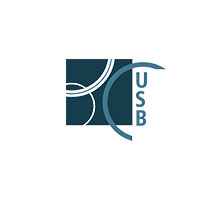Sun, Huanhuan Sun
(2023).
Biochemical exploration of EDS1 family proteins and their interaction with helper-NLRs.
PhD thesis, Universität zu Köln.

|
PDF
Huanhuan Sun_PhD thesis_Publish.pdf Download (2MB) |
Abstract
EDS1 family members are important immune hubs which influence many aspects of plant defense. In Arabidopsis, there are three EDS1 proteins: EDS1, SAG101, and PAD4. In unchallenged plants EDS1 is forming heterodimers with SAG101 and PAD4, respectively, and both heterodimers are important for TNL-mediated immune responses. NRG1s and ADR1s are two groups of NLRs, which are integrated with CCR domains in the N-terminus instead of TIR or CC domains in canonical NLRs. Unlike sensor NLRs, they function downstream of EDS1 family members in effector-triggered immunity and are therefore referred to as helper NLRs. Recently, research shows that two EDS1 family heterodimers are exclusively responsible for two parallel immune branches downstream of TIR-NLR receptors. Typically, upon effector recognition, E-S heterodimers activate downstream NRG1s to trigger the HR response. In contrast, E-P heterodimers activate ADR1s to induce resistance. However, how the signals are transmitted from upstream TNL activation to downstream EDS1 family members and further down to helper-NLRs and eventually elicit the ETI response was still a mystery. In this study, I applied multiple biochemical techniques to investigate the activation mechanism of EDS1 family members and their interaction with helper-NLRs. PAD4 was first purified and tested as a heterodimer together with EDS1 in vitro. A chimera chi2 formed of N-terminal PAD4 and C-terminal SAG101 was used to mimic the active form of SAG101. However, chi2 was not able to activate helper-NLRs under the tested conditions. Given the indispensable role of TNL NADase products in ETI response, we reconstituted the TNL resistosome together with EDS1 family members and helper-NLRs in insect cells, and surprisingly, we captured the interaction of the E-S complex with NRG1A, and the interaction of the E-P complex with ADR1_L1. Furthermore, these results were confirmed by pull-down assays, in which TIR/TNL NADase products were incubated with EDS1, SAG101, and NRG1A, respectively after incubation with EDS1, PAD4, and ADR1_L1. However, in the absence of TIR/TNL NADase products, the interactions could not be induced. This suggests, perhaps the most important finding of this study, that activation of helper-NLRs is controlled by the products of TNL NADases that are captured and delivered to helper-NLRs by the EDS1 family of heterodimers.
| Item Type: | Thesis (PhD thesis) |
| Creators: | Creators Email ORCID ORCID Put Code Sun, Huanhuan Sun huanhuansun6@gmail.com UNSPECIFIED UNSPECIFIED |
| URN: | urn:nbn:de:hbz:38-650908 |
| Date: | 2 March 2023 |
| Language: | English |
| Faculty: | Faculty of Mathematics and Natural Sciences |
| Divisions: | Außeruniversitäre Forschungseinrichtungen > MPI for Plant Breeding Research |
| Subjects: | Natural sciences and mathematics Life sciences |
| Uncontrolled Keywords: | Keywords Language EDS1 English SAG101 English NRG1 English ADR1 English |
| Date of oral exam: | 17 January 2023 |
| Referee: | Name Academic Title Chai, Jijie Prof. Dr. Niefind, Karsten Prof. Dr. |
| Refereed: | Yes |
| URI: | http://kups.ub.uni-koeln.de/id/eprint/65090 |
Downloads
Downloads per month over past year
Export
Actions (login required)
 |
View Item |
